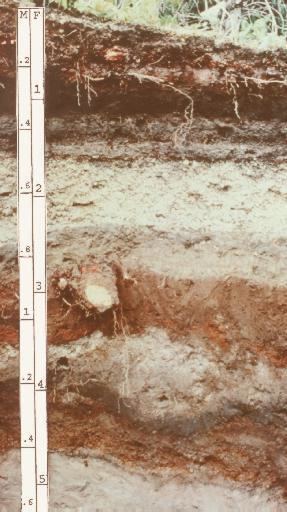Profile ABwC | ||
 | ||
Used in FAO soil classification, USDA soil taxonomy | ||
In USDA soil taxonomy, andisols are soils formed in volcanic ash and defined as soils containing high proportions of glass and amorphous colloidal materials, including allophane, imogolite and ferrihydrite. In the FAO soil classification, andisols are known as andosols.
Because they are generally quite young, andisols typically are very fertile except in cases where phosphorus is easily fixed (this sometimes occurs in the tropics). They can usually support intensive cropping, with areas used for wet rice in Java supporting some of the densest populations in the world. Other andisol areas support crops of fruit, maize, tea, coffee or tobacco. In the Pacific Northwest USA, andisols support very productive forests.
Andisols occupy about 1% of the global ice-free land area. Most occur around the Pacific Ring of Fire, with the largest areas found in central Chile, Ecuador, Colombia, Mexico, the Pacific Northwest USA, Japan, Java and New Zealand's North Island. Other areas occur in the Great Rift Valley, Kenya, Italy, Iceland and Hawaiʻi.
Fossil andisols are known from areas far from present-day volcanic activity and have in some cases been dated as far back as the Precambrian 1.5 billion years ago.
